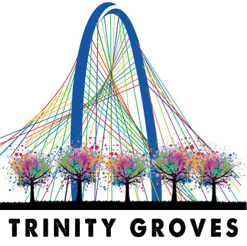If there is an architectural equivalent of what a basic bitch is, Dallas that’s what you are these days. In the age of globalization where homogenization of culture and identity is pervasive, this city is becoming in danger of placelessness as it becomes a postcard of architectural homogeneity with images representative of Dallas as Shanghai. Capitalism inarguably defines the urban fabric, from providing the means and funds to build up city infrastructure to spreading identical commercial brands across the globe. Despite this rapid globalization, there is a want for thoughtful architecture, and to have a sense of place — to be a world-class city. But in doing so, and to be elevated to such a status, is it not exactly ignoring identity and sense of place as originally sought after? Is to be a world-class city mean to be tragically unoriginal and be on track to have a familiar mix of Zaha Hadid and Rem Koolhaas ‘starchitecture’ litter the urban form?
Paul Ricouer describes this conflict as in the spreading of a universal homogenous culture:
“Everywhere throughout the world, one finds the same bad movie, the same slot machines, the same plastic or aluminum atrocities, the same twisting of language by propaganda, etc. It seems as if mankind, by approaching en masse a basic consumer culture, were also stopped en masse at a subcultural level.”
Before we dive in to lists of theorists and theories of architecture and urban design, I should disclaim that this blog post is a slight departure from, but still a follow up to Andrew Barnes’ fantastic latest post, and is adapted from my academic research at the University of Pennsylvania. But that’s fine, right? Let’s elevate the conversation of critique a bit here. If it makes you feel better, take a shot for every time I say something pedantic. TOPIC STATEMENT AS FOLLOWS: This post seeks to evaluate the city of Dallas and its investments in the iconic Santiago Calatrava-designed Bridge(s) through the lens of an attempt to create identity for the city. In short, does the bridge make an argument for creating “place” for a city striving for world-class status, or does it instead succumb to the cultural hybridization of a capitalist culture focused solely on image?
Ok, let’s get back to it.
Dallas is the 9th largest city in the US, and has been one of the fastest growing major metropolitan areas in the nation for decades. Speaking about Dallas, mayor Mike Rawlings once said: “I think the biggest challenge we have is defining ourselves…” and concluded that the city and metro area of Dallas-Fort Worth needs to think regionally and work on branding itself for the world. In what has become one solution towards solving the desire of Dallas’s brand and image, the Margaret Hunt Hill Bridge that spans across the Trinity River has pierced the city’s skyline with its iconic cables and bright white color. The bridge, designed by world-renowned architect Santiago Calatrava elevates Dallas to a city of world-class architecture. Articles reviewing the bridge have found to compare Dallas to other cities that boast Calatrava work like Dublin, Bilbao, Calgary, and even Milwaukee. If the end goal was for these comparative conversations to happen, then the bridge is successful in doing so; Dallas has certainly received the attention it is seeking.
But to critically think of the bridge as a “definition” or “brand” of Dallas and as a point of regional thinking as discussed by the mayor the bridge falls short. The simple act of speaking of Dallas in terms of Dublin or Bilbao is to take away the identity and place of the city. In terms of regionalism, how then, is Dallas unique? If to have a Calatrava bridge elevates the city, how does the bridge define Dallas any differently than it does Milwaukee? This paradox of place and thinking of the city as an unbounded region is critically important. To project slightly from the theory of transurbanism (you can eye roll here and take your first shot), my being in Dallas then, is no different than my being in Milwaukee. Damnit Dallas, you’re so basic.
Calatrava Bilbao
Calatrava Dallas
Calatrava Milwaukee
Bilbao, Dallas, Milwaukee…is there really any difference?
Urban designer Gordon Cullen once suggested that for people to identify with their surroundings there needs to be a sense of enclosure in the city. He described the structure of an ideal place as embodying a sense of arrival to, and departure from, a defined space. Cullen termed it 'Hereness', as opposed to 'Thereness'. While these picturesque values seem out of place in the conversation of regionalism, especially in Texas, perhaps it is only within this milieu that the need for Dallas to define its presence in order to be distinctive on a global scale can be critiqued. In some ways, it seems as though to think of the city as an unbounded region is to assert some level of cultural and identity hybridization; there is no longer a distinction between “here” nor “there”. What makes Dallas different from Fort Worth? From the suburbs? From London? So on and so forth. In the case of our city, there is a blurry polarity between high design from world-renowned architects and an image created for a city so proud to be unique.
One response to the queries of placelessness is Critical Regionalism. It champions place as a key force in shaping modern architecture and reconnecting cities and design with specific cultural and natural elements. In the words of Kenneth Frampton: “the fundamental strategy of Critical Regionalism is to mediate the impact of universal civilization with elements derived indirectly from the peculiarities of a particular place.” (Okay definitely take a shot here) He argues for a return to place and boundaries in lieu of the unbounded region and homogenization of mass culture. It is an approach that works to offset the placelessness and lack of local significance in modern architecture and draws on phenomenology and places emphasis on topography, climate, and light, tectonic form rather than scenography and the tactile rather than the visual. (take your flask out of that Louis Vuitton bag and take shots three, four, five?) The Calatrava Bridge(s) do embody some of these same principles. And yet, the danger with this architectural icon is that it quickly dissolves into a commercial identity and brand based entirely on its scenographic presence in the city. There is a visual preference to the bridge in the pure sweeping form of its arch and the converging lines of the tight cables. The iconic white color of the structure stands out against the monochrome backdrop of a largely post-modern era city. Since its completion, the bridge has surely made its presence in the skyline, and has literally become a new logo for the burgeoning expansion of the Dallas arts district, suggesting its scenographic and visual value is what it is identified with.
Just a couple of examples illustrating the preferred scenographic value of the bridge
It’s hard to say how a regionalist regime should be defined in Dallas. The historic built environment of the city is still quite young in comparison to many of the cities to which it is being evaluated. But in a macro picture where cities are fighting for world-class supremacy, it is only logical that architectural form and the urban fabric be chosen as the grounds for which to be evaluated. However, if thinking regionally as Mayor Rawlings says, is to be used as a valid response to the universalizing push and globalization of Dallas’s culture and identity, then it should be considered through a critical lens. To work on defining the brand of the city, this regime should attempt to preserve some ideal of what has been or what is the present cultural expression. Dallas should be cautious of its huge thrust towards universal modernization and commercialization for the sake of achieving world-class status with iconic architecture, especially in regard to its slogan "big things happen here," and in turn be the forefront for preventing the postcard architectural homogeneity of our cities. Dallas, you’re sweet and I love you, but just because you have the name brand architecture, doesn’t make you special.
Sorry, you’re probably drunk now. Go grab a pumpkin spice latte.
Shelly Zhu is a Dallas native urban designer and city planner. She is an advocate for open data transparency whose strength lies in urban analytical and data visualization, mapping, and strategic branding. She is a champion Sudoku player*, enjoys 90’s rap and a fine cheese. Lately, you can find her watching the X-Files and drinking homemade gin.
*unverified






